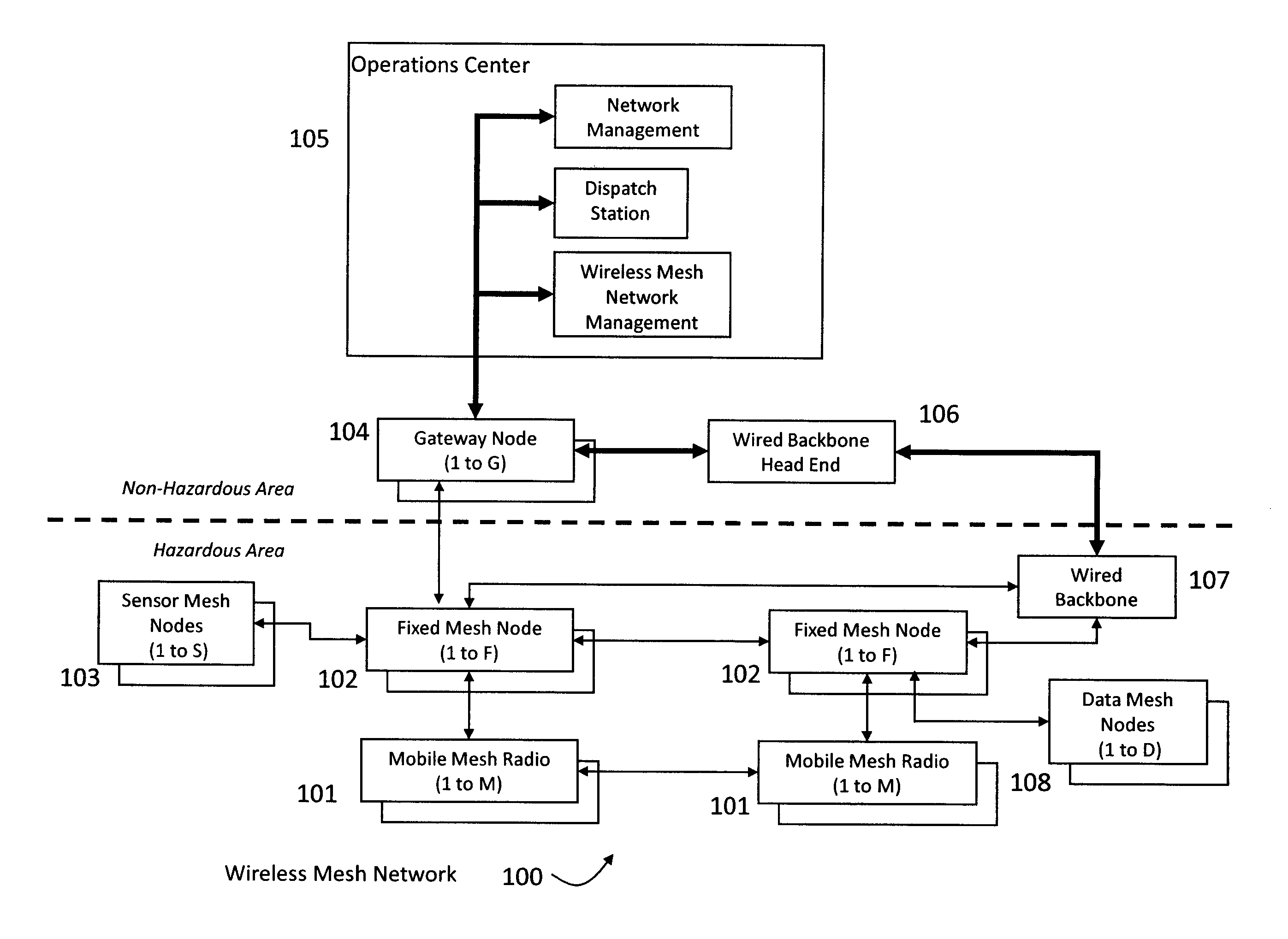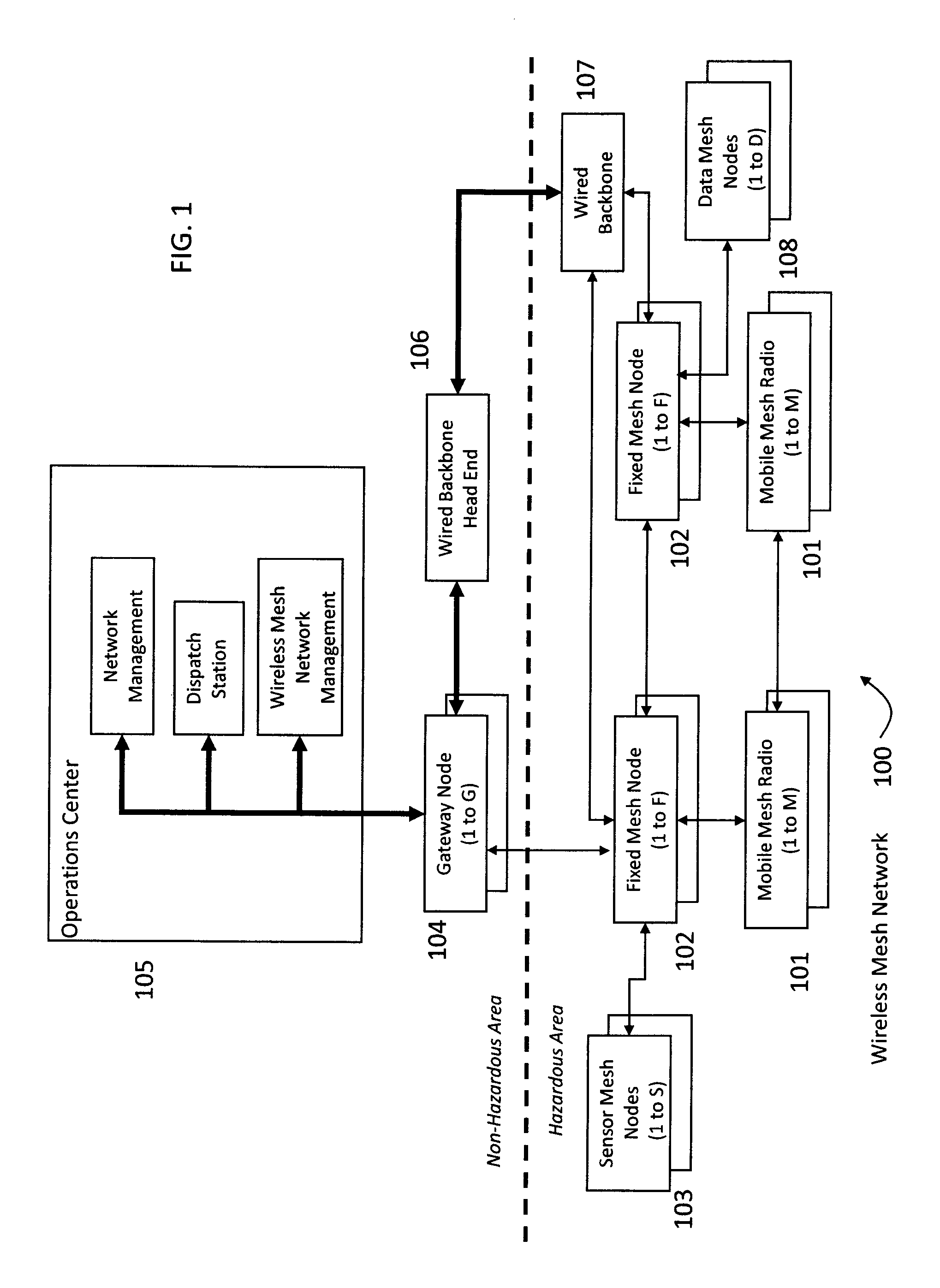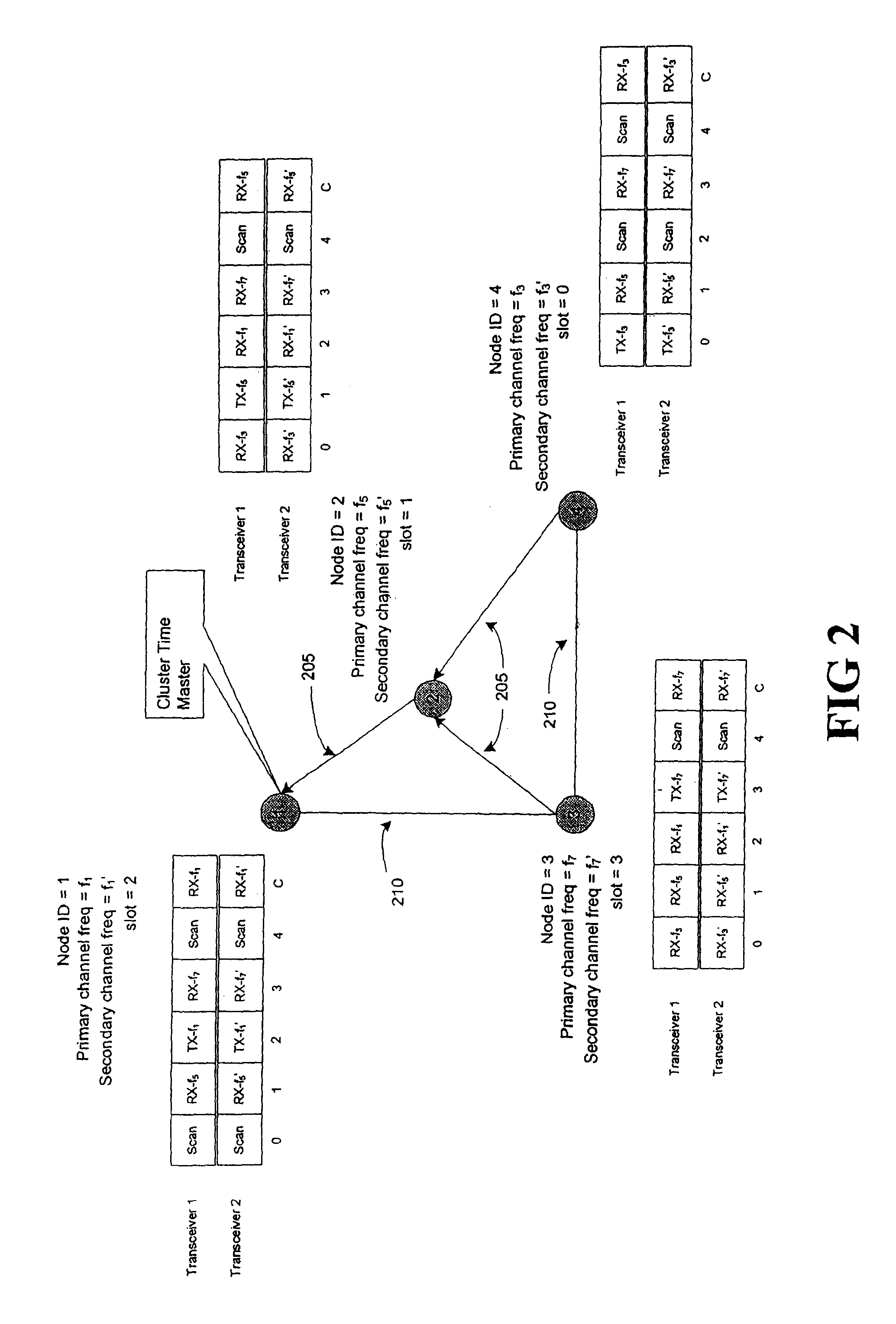Distributed ad hoc mesh network protocol for underground mine and hazardous area communications
a technology for hazardous areas and mesh networks, applied in the field of distributed ad hoc mesh network protocols for underground mines and hazardous areas, can solve the problems of complicated recovery efforts, insufficient support of current communication systems, and very limited quality of service (qos) mechanisms of original 802.11 protocol, and achieve the effect of reliable communication
- Summary
- Abstract
- Description
- Claims
- Application Information
AI Technical Summary
Problems solved by technology
Method used
Image
Examples
Embodiment Construction
[0027]This invention helps to provide reliable voice and data communications with personnel and sensors within a hazardous area and also with a remote operation center during normal operations as well as during an event that requires shut down of normal operations. The invention allows rescue teams to determine personnel status, where personnel are located, and environment conditions such as water, toxic gases, and oxygen availability in the hazardous area. The wireless voice / data network protocol of the present invention comprises a number of intercommunicating blocks which automatically form a Wireless Mesh Network (WMN) 100 that can reform when links are removed or blocked.
[0028]The system and method of the present invention provide a voice / data network protocol to supply Operations Center staff with event detection information, voice and text communications, and personnel location information, as illustrated in FIG. 1. In a preferred embodiment, four types of nodes are provided ...
PUM
 Login to View More
Login to View More Abstract
Description
Claims
Application Information
 Login to View More
Login to View More - R&D
- Intellectual Property
- Life Sciences
- Materials
- Tech Scout
- Unparalleled Data Quality
- Higher Quality Content
- 60% Fewer Hallucinations
Browse by: Latest US Patents, China's latest patents, Technical Efficacy Thesaurus, Application Domain, Technology Topic, Popular Technical Reports.
© 2025 PatSnap. All rights reserved.Legal|Privacy policy|Modern Slavery Act Transparency Statement|Sitemap|About US| Contact US: help@patsnap.com



